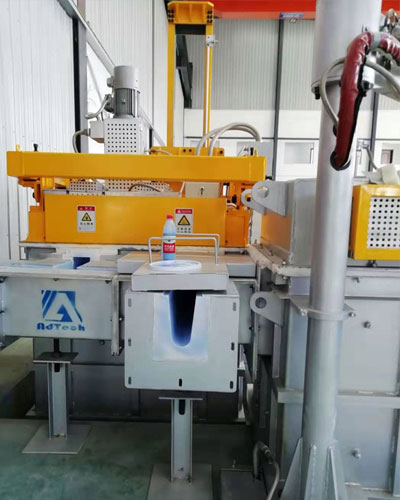The highest concentration of hydrogen dissolved in the molten aluminum alloy may be as high as 0.6ml H2/100g Al. Careful smelting operations can reduce the concentration of hydrogen. But even with the best operation, the cast aluminum alloy liquid after remelting may contain 0.2~0.3mlH2/100gAl. The aluminum casting degassing method is to pass dry inert gas into the molten metal to reduce the hydrogen content to about 0.1ml/100g. Hydrogen has different solubility in liquid and solid in different alloy systems. When the hydrogen content is 0.12ml/100g Al, the AI-Si alloy can be used to produce porosity-free castings, while the low-silicon AI-Cu-Ni alloy with a hydrogen content of 0.32ml/100g has no porosity. If the hydrogen content is too low, shrinkage defects are inevitable.
Aluminum Casting Degassing Method
To make any degassing process more effective, it is necessary to generate very small inert gas bubbles at the bottom of the molten metal and make it float up through all parts of the molten aluminum. In this process, the temperature of the molten metal should be as low as possible. The AdTech online degassing device allows the inert gas to enter the molten metal through the rotating graphite rotor for degassing. The specially designed rotor will break up the inert gas into a large number of small bubbles. When the small bubbles move or float in the molten metal, the dissolved hydrogen will diffuse into the small bubbles and follow the small bubbles to the surface of the molten metal When discharged into the atmosphere. During the ascent process, small bubbles can also adhere to some impurities and bring them to the surface of the molten metal, and then remove these inclusions when slagging.
Aluminium Degassing Equipment is the best choice for molten aluminum purification and degassing in the aluminum alloy industry. The gas is usually introduced through a degassing rotor, which reduces the size of the bubbles and disperses the nitrogen gas throughout the molten metal bath.

